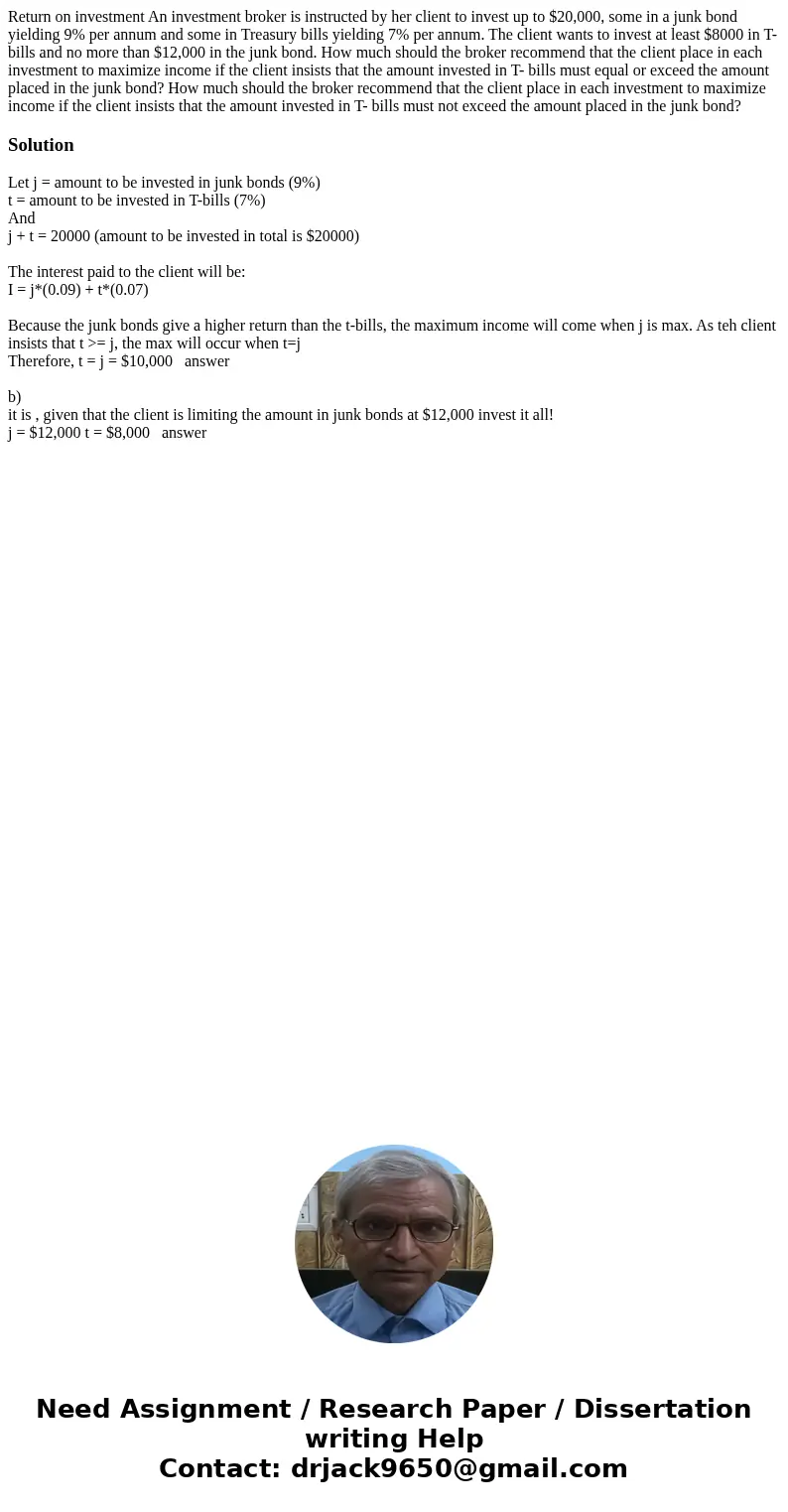Return on investment An investment broker is instructed by h
Return on investment An investment broker is instructed by her client to invest up to $20,000, some in a junk bond yielding 9% per annum and some in Treasury bills yielding 7% per annum. The client wants to invest at least $8000 in T-bills and no more than $12,000 in the junk bond. How much should the broker recommend that the client place in each investment to maximize income if the client insists that the amount invested in T- bills must equal or exceed the amount placed in the junk bond? How much should the broker recommend that the client place in each investment to maximize income if the client insists that the amount invested in T- bills must not exceed the amount placed in the junk bond?
Solution
Let j = amount to be invested in junk bonds (9%)
t = amount to be invested in T-bills (7%)
And
j + t = 20000 (amount to be invested in total is $20000)
The interest paid to the client will be:
I = j*(0.09) + t*(0.07)
Because the junk bonds give a higher return than the t-bills, the maximum income will come when j is max. As teh client insists that t >= j, the max will occur when t=j
Therefore, t = j = $10,000 answer
b)
it is , given that the client is limiting the amount in junk bonds at $12,000 invest it all!
j = $12,000 t = $8,000 answer

 Homework Sourse
Homework Sourse